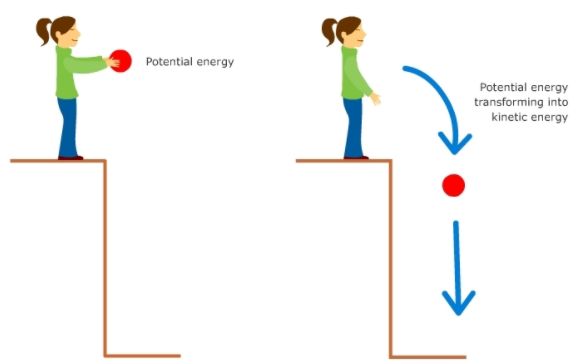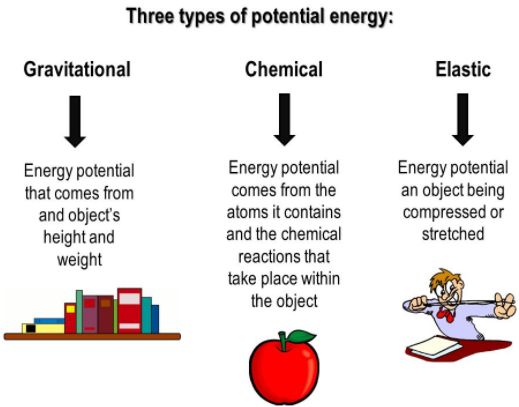- Books Name
- Science Made Easy Science Book
- Publication
- Science Made Easy
- Course
- CBSE Class 9
- Subject
- Science
Kinetic Energy
Objects in motion possess energy and can do work. This energy is called Kinetic Energy.
F = ma.
Also W = F.s
⇒ From the 2nd equation of motion v2−u2=2as,
⇒ we get s = v2−u2 / 2a
Substituting equation for work done by a moving body,
⇒ we get W =m.a * v2−u2 / 2a
Or
⇒ Kinetic Energy = K.E= 1/2 mv2 (taking initial velocity u=0)
When two identical bodies are in motion, the body with a higher velocity has more K.E.

Work-energy theorem
The work-energy theorem states that the net work done by a moving body can be calculated by finding the change in KE.
⇒ Wnet = KEfinal− KEinitial
⇒ Wnet = 1/2 mv2
Factors affecting kinetic energy
- Mass
- Velocity
- Momentum
Potential Energy
Energy can get stored in an object when work is done on it.
For example, stretching a rubber string. The energy that is possessed by a body by virtue of its configuration or change in position is known as Potential Energy.

The potential energy of an object at a height.
When an object is raised to a certain height, work is done against gravity to change its position. This energy is stored as Potential Energy.
⇒W = F.s
⇒F = ma
In the case of increasing the height, F = mg
Therefore, W (P.E) = mgh
⇒ ΔPE = mg(hfinal - hinitial )

 Science Made Easy
Science Made Easy
